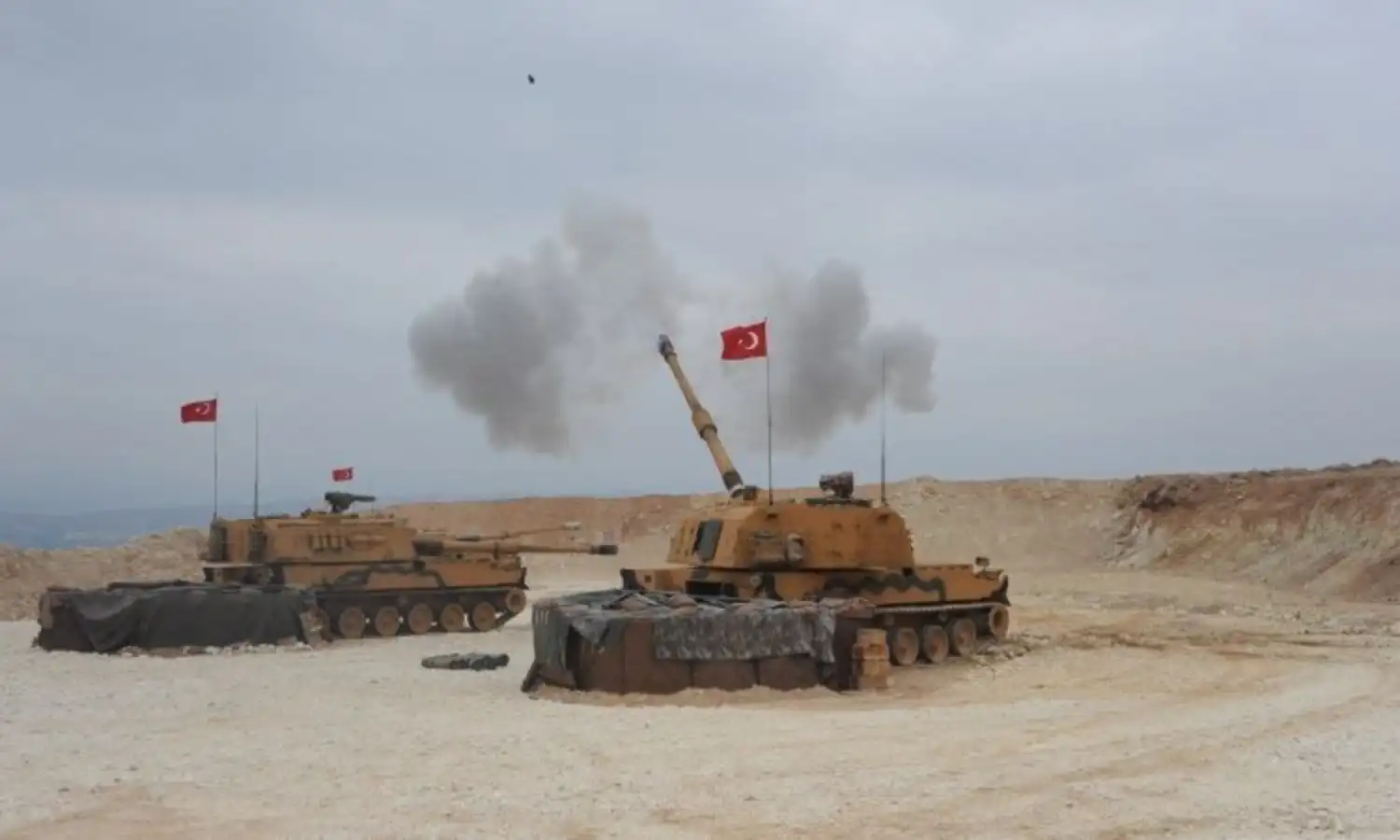Russia, the USA, and the Syrian 'ISIS' Bogey
Time is on the side of the Syrian state

The Turkish invasion of northeast Syria, which began on October 9, has attracted global attention—and criticism—in the last few weeks. Turkey had been preparing for the invasion for months, aimed at preventing the emergence of a Kurdish state controlled by the YPG (or People’s Protection Units) militia. The YPG is the Syrian branch of the PKK, the Kurdistan Workers’ Party, that has been fighting since 1984 to establish a separate state for the Kurds. It is banned by Turkey.
The YPG wanted to establish a state in the Kurdish majority areas of Syria in the northeast of the country. It thought it could do so with the help of the US, which had used it to defeat the Islamic State (ISIS). The US had renamed it “Syrian Democratic Forces,” or SDF, and used it as its infantry to fight the ISIS in Syria. In the process, the SDF lost more than 11,000 men, a substantial number by any reckoning.
In return, the SDF wanted a Kurdish state carved out of Syria. But neither Syria nor Turkey wanted that to happen. And if the SDF thought that the US would reward it by backing its separatist plans, it was mistaken.
On Oct. 6, the White House announced: “Turkey will soon be moving forward with its long-planned operation into Northern Syria…the US forces, having defeated the ISIS territorial ‘Caliphate,’ will no longer be in the immediate area.” Earlier, President Trump had phoned Turkish President Erdogan, giving him the green light to commence his military operations in Syria. The SDF felt it had been used and then discarded by the US which, in fact, was the case.
Erdogan’s military began bombing and shelling Syrian villages on the border on Oct. 9, forcing tens of thousands of civilians to flee their homes. Concurrently, Trump announced that US forces in the area, numbering around one thousand, were being withdrawn. Their presence had protected the SDF from assault by the Turkish army, whose instructions were to remove the Kurds from the Turkish-Syrian border and create a “buffer zone,” 30 km deep and around 500 km long, on Syrian soil.
The Syrian Kurds were faced with an existential crisis. There was nobody to protect them against the Turkish army. They had only one option—seek the help of the Syrian government. But in doing so, they had to give up their dream of a separate state. This they did, by reaching an agreement, under Russian auspices, with the Syrian authorities. Once that happened, the Syrian Army quickly began moving into the areas being attacked by Turkey. Russian military police also appeared on the scene, to prevent any confrontation between the Turks and the Syrians.
By that time, Turkish forces had unleashed a brutal assault against the Syrian Kurds, triggering a barrage of criticism directed against President Trump, by both the Democrats and the Republicans. They accused him of betraying the Kurds, by throwing them to the wolves after using them. They also criticised his withdrawal of US forces from northeastern Syria, conveniently ignoring the fact that the presence of US troops in Syria itself was illegal under international law.
The US “Deep State” wants an open-ended US presence in Syria until the objective of “regime change” is achieved. In case that is not possible, it would like Syria to be partitioned, with eastern Syria—where the major oilfields and the country’s breadbasket are located—in the hands of a US puppet. Anything less than that would amount to a defeat for the US and its allies.
To prevent this outcome, officials in some US agencies have been subverting Trump’s instructions to withdraw US forces from Syria. Several reports indicate that these officials have been ignoring instructions from Trump, who has said that he wants to end US involvement in “endless wars” and bring his troops home. However, these officials are not withdrawing US troops deployed near Syria’s oilfields in Deir-ez-Zor, to deny their oil revenue to Assad. They have persuaded Trump that US forces are needed there to prevent a resurgence of ISIS, which is obviously false.
They also cannot digest the fact that President Vladimir Putin of Russia has emerged as the most important player in the Middle East. He is responsible for preventing the collapse of the Assad government in 2015, and the takeover of Syria by Jihadi groups such as ISIS. It is Putin who has orchestrated the current developments on the Turkish-Syrian border. Preservation of the sovereignty and territorial integrity of Syria is the bottom line for him.
There are indications that Putin and Assad will have to overcome some more obstacles for achieving that objective. Although, under Russian pressure, President Erdogan has agreed to suspend the operations of the Turkish army on the border with Syria, he has demanded that the YPG should not be present within thirty km of its border with Turkey. Syria has agreed to this condition, which is also guaranteed by Moscow.
But even if Syria’s northern border with Turkey becomes quiet, the problem of wresting eastern Syria from the US will remain. As mentioned above, the US deep state wants to snatch eastern Syria from Assad’s hands if it cannot accomplish regime change. US Defence Secretary Mark Esper has said that more troops and tanks are being sent to Deir-ez-Zor, to prevent Syria’s oil from falling into ISIS’s hands. But that is a lie, as explained above.
On the other hand, the Syrian state, helped by Russia and Iran, has overcome seemingly insurmountable odds in this eight-year-old war, in which more than 500,000 have been killed, and millions made homeless. And in one sense Syria has already defeated the US—by refusing to succumb to regime change, unlike Serbia, Afghanistan, Iraq, Libya, and Ukraine. Similarly, it is not impossible that Syria and Russia will find a way to expel US forces from Deir-ez-Zor. And time is on Syria’s side, not the US’s.



